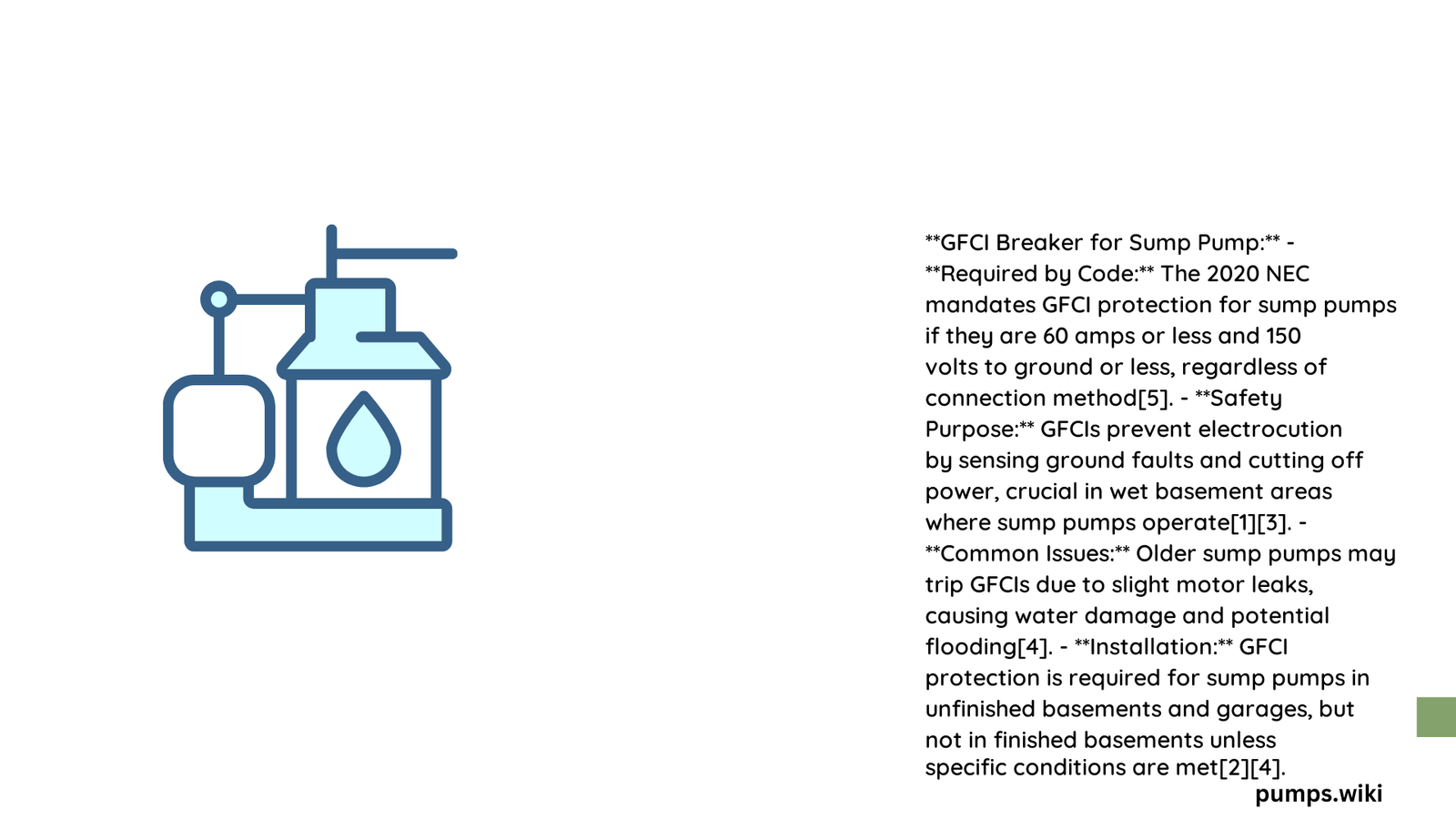A GFCI breaker sump pump represents a critical electrical safety mechanism designed to protect homeowners from potential ground fault risks during water removal processes. This specialized electrical protection ensures that sump pump circuits remain secure, preventing electrical accidents while efficiently managing basement water accumulation through precise ground fault circuit interruption technology.
What Makes GFCI Breaker Essential for Sump Pump Safety?
Why Do Sump Pumps Require GFCI Protection?
Sump pumps operate in moisture-rich environments, making electrical safety paramount. The National Electrical Code (NEC) mandates GFCI protection for sump pump circuits to prevent potential electrical hazards. Here’s why GFCI breakers are crucial:
- Immediate Fault Detection: Rapidly interrupts electrical current during ground fault conditions
- Personnel Protection: Prevents potential electrical shock scenarios
- Code Compliance: Meets 2020 NEC requirements for electrical installations
How Does GFCI Breaker Functionality Work?
GFCI breakers monitor electrical current flow between hot and neutral wires. When an imbalance occurs—indicating a potential ground fault—the breaker instantly cuts power, typically within 1/40th of a second.
| GFCI Breaker Specification | Typical Sump Pump Requirements |
|---|---|
| Voltage Rating | 120V |
| Amperage | 15-20 Amps |
| Response Time | < 0.025 seconds |
| Protection Class | Class A |
What Installation Considerations Exist for GFCI Breaker Sump Pump?
Wiring Configuration Guidelines
- Circuit Requirements:
- Use single-phase circuit
- Employ 12-gauge wire for 20-amp circuits
-
Ensure dedicated circuit for sump pump
-
Placement Recommendations:
- Install in easily accessible location
- Protect from direct water exposure
- Maintain clear working space around electrical panel
What Causes GFCI Breaker to Trip in Sump Pump Circuits?
Common triggers for GFCI breaker tripping include:
- Moisture infiltration in electrical components
- Damaged pump wiring
- Insulation breakdown
- Water exposure to electrical connections
- Pump motor degradation
How to Troubleshoot GFCI Breaker Sump Pump Issues?
Diagnostic Steps
- Visual Inspection
- Check for visible wire damage
- Examine pump cord integrity
-
Verify moisture-free electrical connections
-
Electrical Testing
- Use multimeter to check circuit continuity
- Test ground fault sensitivity
- Verify proper voltage supply
What Brands Offer Reliable GFCI Breakers?
Recommended manufacturers include:
– Square D
– Cutler-Hammer
– Leviton
– Siemens
– Bryant
Maintenance Best Practices
- Annual electrical system inspection
- Regular pump functionality testing
- Keep electrical areas dry
- Replace aging electrical components
- Professional periodic evaluation
Expert Recommendations

Professional electricians consistently emphasize the importance of proper GFCI breaker installation and maintenance for sump pump systems. Investing in quality electrical protection prevents potential water damage and ensures long-term reliability.
Technical Specifications to Remember
- Comply with NEC 2020 standards
- Use Class A GFCI protection
- Maintain proper wire gauge
- Ensure dedicated circuit
Pro Tip: Always consult a licensed electrician for complex sump pump electrical installations to guarantee safety and code compliance.
Final Technical Insights
GFCI breaker sump pump systems represent a critical intersection of electrical safety and water management technology. Proper understanding and implementation protect both residential infrastructure and personal safety.
